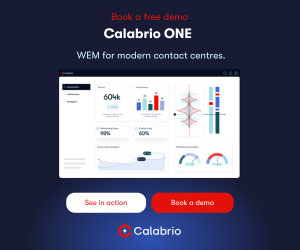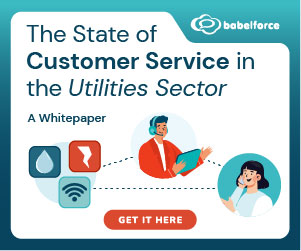These days, providing an exceptional customer experience (CX) is not just a necessity – it’s a key differentiator.
One powerful way to elevate CX is through immersive technologies, such as virtual reality (VR), augmented reality (AR), and other interactive simulations. These technologies create rich, engaging environments where customers can interact with products, services, and brands in new and meaningful ways.
Want to find out more? Here we share some of the best examples of immersive CX experiences that are transforming agent training and enhancing customer support.
How to Improve Agent Training With Immersive Experiences
Enhance Empathy Through Virtual Reality Training
In our recent Advanced Coaching Techniques webinar, Carolyn Blunt shared a compelling example of how scenario-based simulations could enhance customer support.

Imagine an insurance call centre agent donning a VR headset to experience a simulated environment where a home is flooded. In this environment, agents can see the damage and hear the distressing sounds of the flood.
This simulation allows agents to empathize with the customer’s situation on a visceral level. It not only builds empathy but also enables agents to practise their responses in a high-stress situation, equipping them with the emotional and psychological tools to provide exceptional support.
Customers interacting with these agents will notice the difference in service, as agents who truly understand the emotional weight of the claim will be able to offer more compassionate, helpful, and accurate assistance.
Let Agents Practise Their Skills on Virtual Customers
One of the most powerful applications of immersive technology in training is using virtual reality (VR) to simulate real customer service interactions – such as The National University of Singapore is doing by incorporating VR into its customer service training programmes, where students train by responding to virtual customers.
This allows agents to practise their communication, problem-solving, and emotional intelligence in scenarios they would not otherwise have the chance to experience.
It’s a highly interactive way to learn, offering a more engaging experience than traditional role-playing or case studies.
VR provides an effective, risk-free environment for agents to practise their skills by creating scenarios where agents experience difficult customers, high-stress situations, or complex product enquiries.
It makes training far more engaging and practical, allowing agents to put their theoretical knowledge to use in a safe environment before having to handle real-life customers.
Mock calls are another great way to improve agent’s skills. For advice on including them in your training, read our article: How to Use Mock Calls to Improve Agent Performance – With Free Exercises
Teach Agents About Operational Procedures With Gamified Training Environments
Many companies are embracing gamification to train their agents, offering immersive, game-like environments that provide both entertainment and learning.
For example, companies like DHL and McDonald’s have used gamified VR environments to teach employees about logistics, customer interaction, and operational procedures.
These gamified environments take learning beyond the usual classroom and paper manual, providing a dynamic experience that challenges agents in a fun, competitive way.
Gamification enhances engagement and improves retention of key training materials, making agents better equipped to handle real-world challenges.
Help Agents Better Understand New Products With 3D Virtual Training
T-Mobile provides a great example of using 3D immersive training to teach employees about new products and services.
Their VR training module includes interactive 3D models of mobile phones and accessories that agents can manipulate to understand how each product works.
This ensures that agents are not only familiar with the products they are selling but also capable of walking customers through the features in a highly detailed and informative way – and that agents can deliver a better service experience, especially for customers who may need in-depth explanations about technical products.
For more advice on how to inspire your agents to love your products and services, read our article: How to Ensure Agents Love Your Products and Services
How to Improve Customer Service With Immersive Experiences
Let Customers Virtually Explore Their New Kitchen
Wren Kitchens offers a standout example of how virtual reality can transform the shopping experience. Customers can use a VR headset to explore a kitchen design they’ve just selected, virtually walking through the space, opening drawers, and closing cupboards.
This immersive experience allows customers to visualize their dream kitchen in the comfort of the showroom, providing a deeper level of engagement than traditional 2D models or static images could offer.
It’s not just about selling a product – it’s about creating an emotional connection with the space, which significantly improves the decision-making process.
Wren Kitchens allows potential customers to immerse themselves in the actual design and interact with it – even opening cupboard doors!
This immersive experience helps reduce purchase anxiety and can increase the likelihood of closing a sale, and helps customers to feel more confident and satisfied with their purchase once it’s made.
Give Customers the Ability to Place Virtual Products in Their Own Home
In 2017, IKEA announced the launch of IKEA Place, an augmented reality (AR) application that “lets people confidently experience, experiment and share how good design transforms any space, such as a home, office, school or studio.”
The app gives users the ability to place virtual products in their physical space, adjusting for scale and even interacting with the pieces (e.g., opening drawers, rotating the items). This is particularly helpful for those who aren’t sure if a piece of furniture will fit or suit their living room’s style.
When it comes to customer support, this AR tool could be enhanced by integrating live chat features or AI support.
A customer could be navigating a product assembly or facing issues with fitting their new sofa, and an agent could easily step in, guiding them with step-by-step instructions through the app – or one of the many others on their app page.
Help Customers Perform Simple Fixes Themselves With Real-Time Remote Assistance
BMW’s Virtual Assistance for Car Owners offers a highly interactive way of helping car owners with remote diagnostics and virtual support.
Using AR glasses or a smartphone, customers can receive real-time assistance while performing simple maintenance tasks, such as changing a tyre or understanding vehicle warning lights.
This immersive remote assistance reduces the need for customers to visit a service centre, saving time and frustration. It also allows for a more detailed, visual form of support that can be easier to follow than written instructions.
This type of immersive CX not only increases customer satisfaction but also empowers customers to take control of basic maintenance tasks, improving their overall ownership experience.
VR and AR Can Create Experiences That Are Far More Engaging
We’re seeing some really exciting results with immersive CX, especially in support and training. Through VR and AR, we can create experiences that are far more engaging and build a real sense of connection.
Whether via customers walking through a virtual kitchen showroom, or agents practising crisis management in a simulated environment – it’s simply about making interactions more meaningful.
As more contact centres embrace these technologies, we should see a real shift in how we approach customer experience, leading to better outcomes for everyone.
For more advice on how to improve your contact centre CX, read these articles next:
Author: Stephanie Lennox
Reviewed by: Jo Robinson
Published On: 14th Jul 2025 - Last modified: 13th Nov 2025
Read more about - Customer Service Strategy, CallMiner, Carolyn Blunt, Customer Experience (CX), Customer Service, Predictions, Service Strategy, Stephanie Lennox, Top Story









































